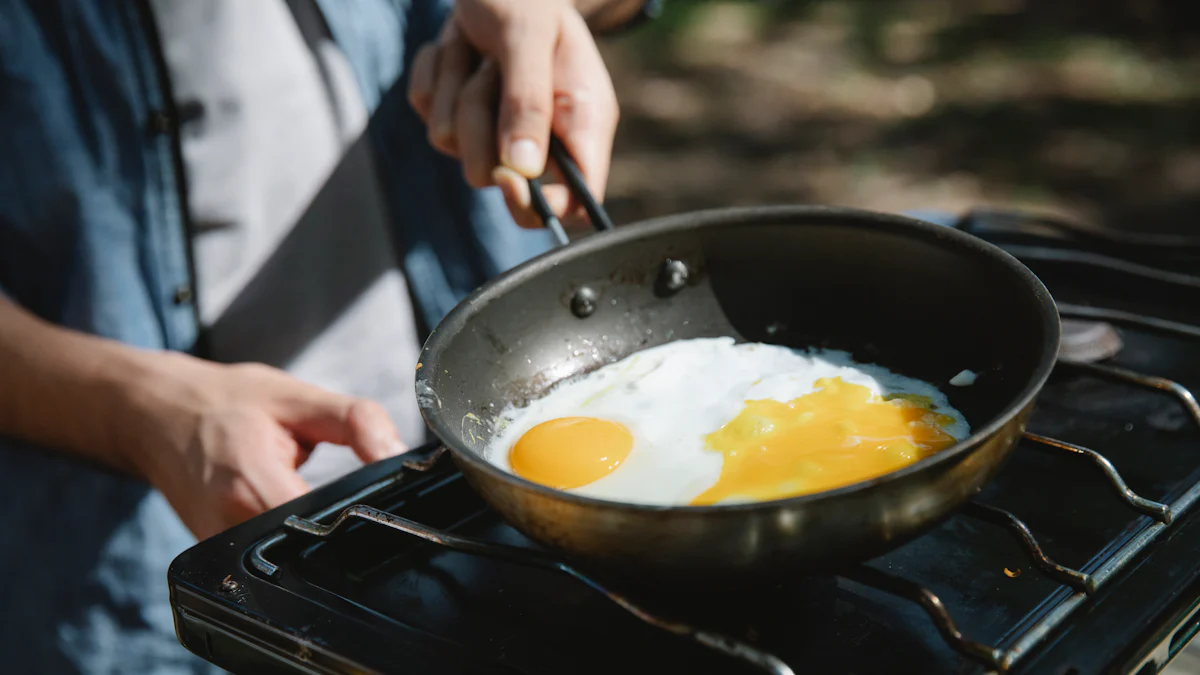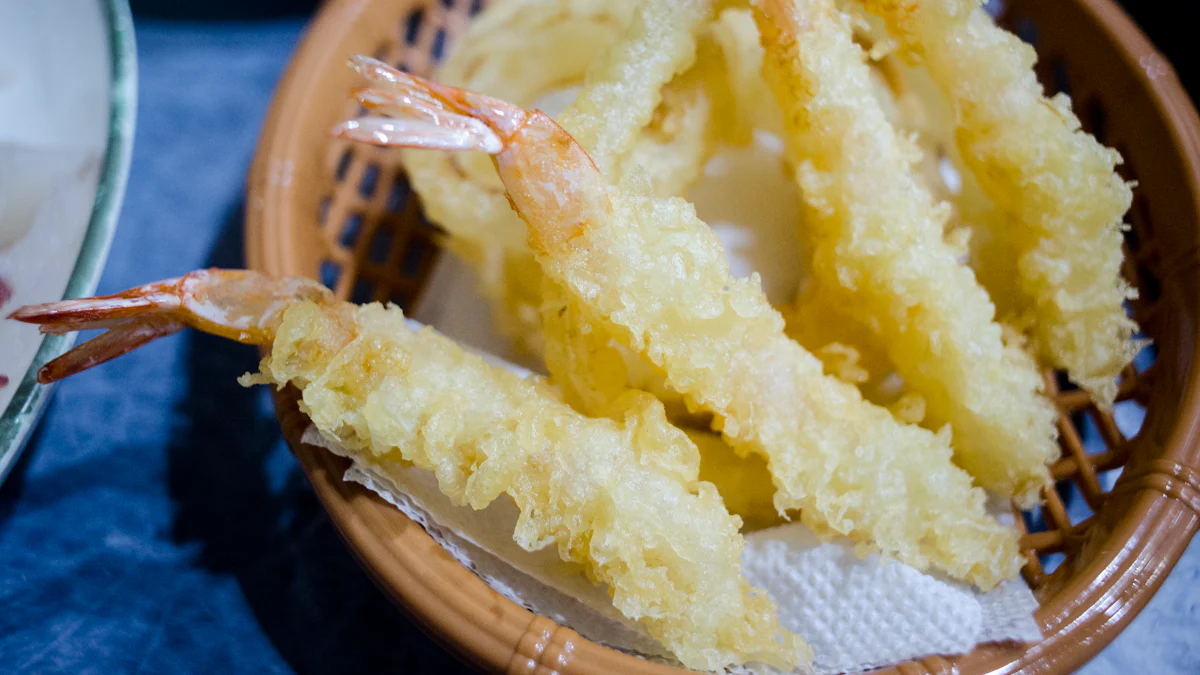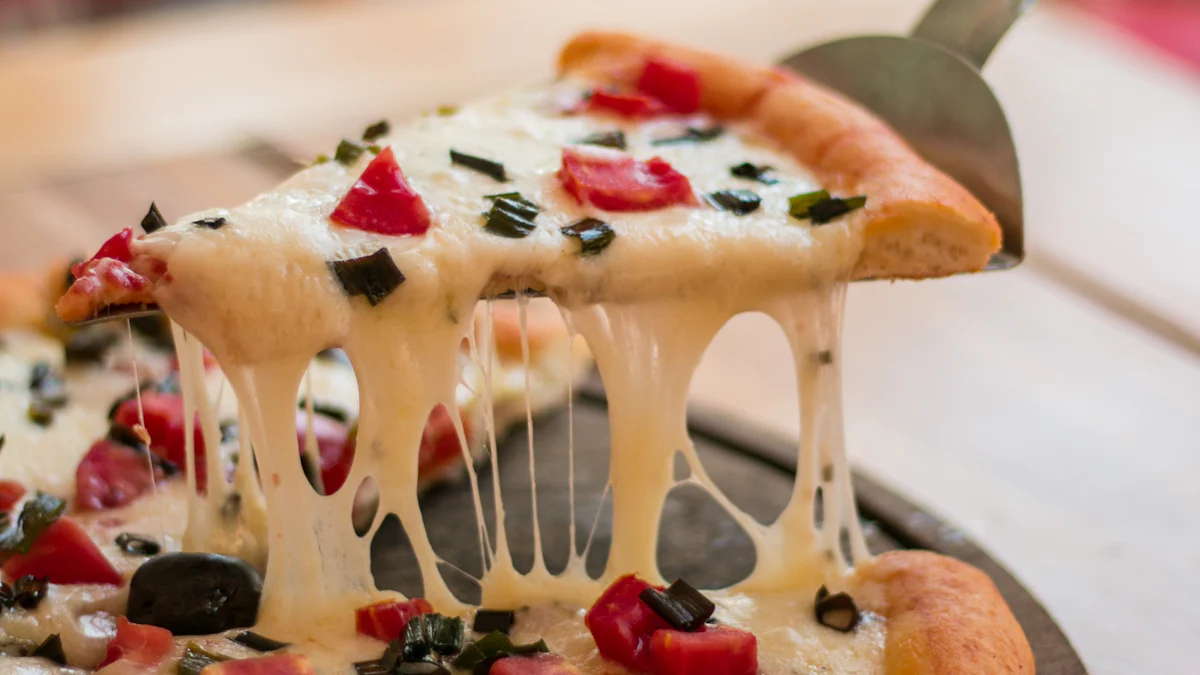What cannot be cooked in an air fryer

With the increasing demand for healthier cooking alternatives, air fryers have gained immense popularity in recent years. The market value of air fryers is projected to reach 1,854.8 million by 2032, showcasing a 6.5% growth rate. Understanding what foods are unsuitable for air fryers is crucial for both safety and culinary success. This blog aims to explore the limitations of air fryers, providing valuable insights into foods that should be avoided to ensure optimal cooking results.
Foods with Wet Batter

When considering air fryers, it is important to note that foods with wet batter pose a significant challenge. Understanding why wet batter doesn't work in an air fryer is essential for achieving optimal cooking results and avoiding messy outcomes.
Why Wet Batter Doesn't Work
Exploring the science behind how air fryers cook food reveals the limitations when dealing with wet batter. Unlike traditional deep frying methods that submerge food in oil, air fryers utilize hot air circulation to create a crispy texture. This process does not accommodate wet batters effectively, leading to potential issues during cooking.
Explanation of how air fryers cook food
Air fryers operate by circulating hot air at high speeds around the food, creating a convection effect that cooks the outer layer rapidly. This method works well for dry coatings or minimal oil applications but struggles with wet batters that require more substantial oil immersion for proper cooking.
Issues with wet batter in an air fryer
When attempting to cook foods with wet batter in an air fryer, the lack of oil submersion prevents the batter from adhering correctly to the food's surface. As a result, the batter may fail to crisp up evenly, leading to a less satisfying texture and appearance. Additionally, the excess moisture from the wet batter can affect the overall cooking process, potentially resulting in unevenly cooked or soggy outcomes.
Leafy Greens
Leafy greens present unique challenges when cooked in an air fryer. Understanding these difficulties is essential to avoid potential issues and ensure a successful cooking experience.
Challenges with Leafy Greens
Air circulation issues
Leafy greens, such as kale or spinach, have delicate leaves that can impede the proper circulation of hot air within the air fryer. This limitation may result in uneven cooking, where some leaves crisp up while others remain undercooked.
Risk of uneven cooking and burning
Due to their varying textures and moisture content, leafy greens are prone to burning in certain spots while remaining raw in others when cooked in an air fryer. The rapid air circulation can cause dry leaves to burn quickly, leading to an unappetizing charred taste.
Cheese

Cooking Cheese in Air Fryers
When cooking cheese in air fryers, it is essential to understand the challenges that arise. The process of melting cheese in an air fryer can lead to specific issues that affect the overall outcome.
Problems with Cooking Cheese
Melting and mess issues
Melting cheese in an air fryer can result in unexpected outcomes due to the rapid heat circulation. Certain types of cheese may melt too quickly, leading to a messy situation within the appliance.
The risk of melting cheese dripping and burning in an air fryer poses a significant concern for users. This can not only create a mess but also impact the cooking process and potentially cause smoking.
Difficulty in achieving desired texture
Achieving the desired texture when cooking cheese in an air fryer can be challenging. The delicate balance required for even melting without burning is hard to maintain due to the intense heat and airflow.
The unpredictable nature of how cheese melts in an air fryer can result in uneven textures or overly crisp edges, which may not align with the expectations of cheese enthusiasts.
Whole Roasts
Limitations of Air Fryers for Large Cuts of Meat
Size constraints
Cooking whole roasts in an air fryer presents challenges due to the size of the meat, such as whole chickens or large cuts.
The limited space within the air fryer basket may restrict proper air circulation around the entire roast, affecting the cooking process.
Inconsistent cooking results
When attempting to cook whole roasts in an air fryer, users may encounter inconsistent cooking outcomes.
The uneven distribution of heat caused by the size and shape of the roast can lead to portions being undercooked while others are overdone.
This inconsistency in cooking results can impact the overall taste and quality of the final dish.
Delicate Pastries
When considering delicate pastries, it is essential to understand the challenges they present when cooked in an air fryer. These pastries, known for their light and flaky texture, may not achieve the desired results due to the unique cooking method of air fryers.
Air circulation and texture problems
Delicate pastries rely on precise baking conditions to maintain their airy texture and golden crust. In an air fryer, the rapid hot air circulation can disrupt this delicate balance, potentially leading to uneven textures and underwhelming outcomes.
The convection effect created by air fryers may not suit the gentle nature of delicate pastries, affecting how they rise and bake. This can result in inconsistencies in texture, with some parts becoming too crispy while others remain undercooked.
Risk of overcooking or drying out
Due to the intense heat produced by air fryers, delicate pastries are at risk of overcooking or drying out quickly. The lack of moisture retention within the appliance can cause these pastries to lose their tenderness and become tough.
Maintaining the ideal moisture level during baking is crucial for delicate pastries' success. However, the rapid cooking process in an air fryer may not provide sufficient time for these pastries to develop their desired moistness, leading to potential dryness.
In summary, understanding the limitations of an air fryer is essential for successful cooking. Using the right methods for each food type ensures optimal results. Don't hesitate to explore air fryer-friendly recipes to unleash your culinary creativity. Share your experiences and tips with fellow cooking enthusiasts to enhance everyone's air frying journey.
See Also
Is Pyrex Safe to Use in an Air Fryer
Avoid Putting Plastic in Your Air Fryer
Cooking Fresh Pierogies in an Air Fryer
